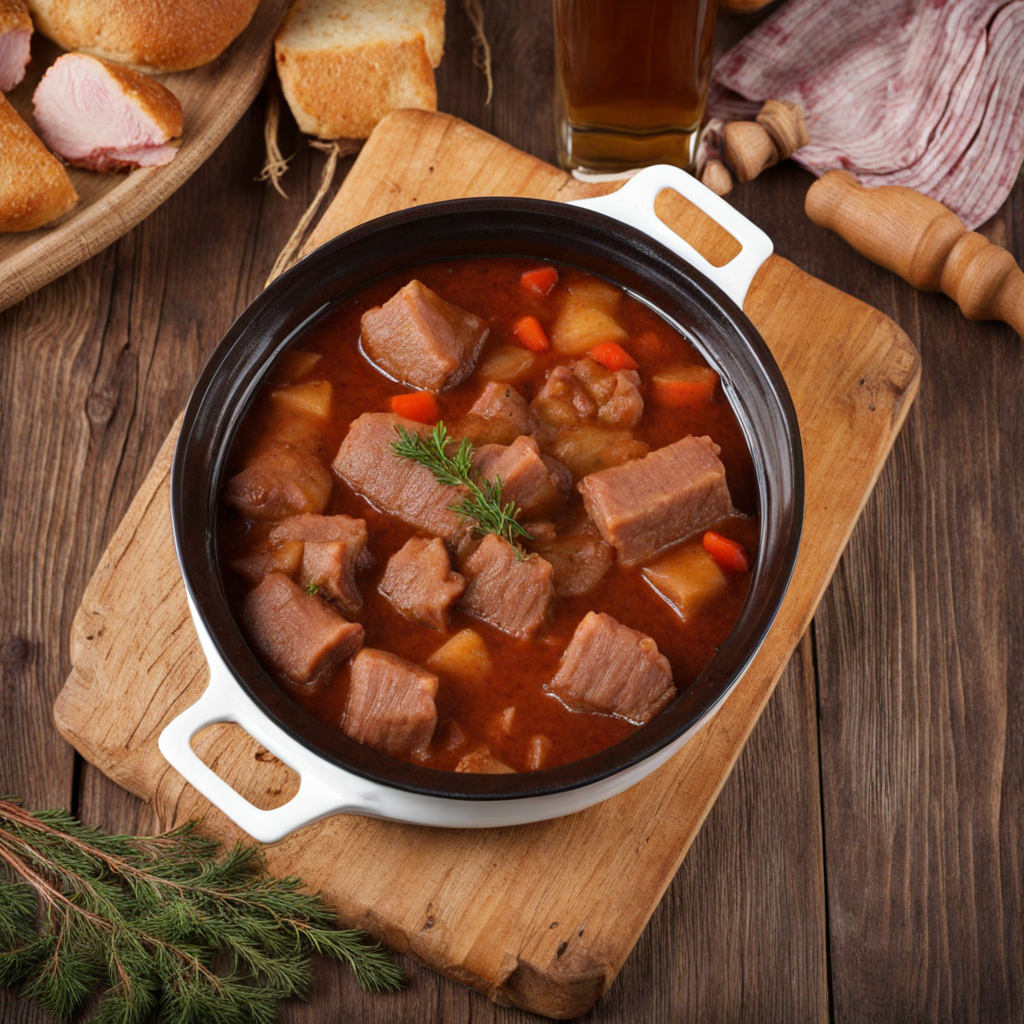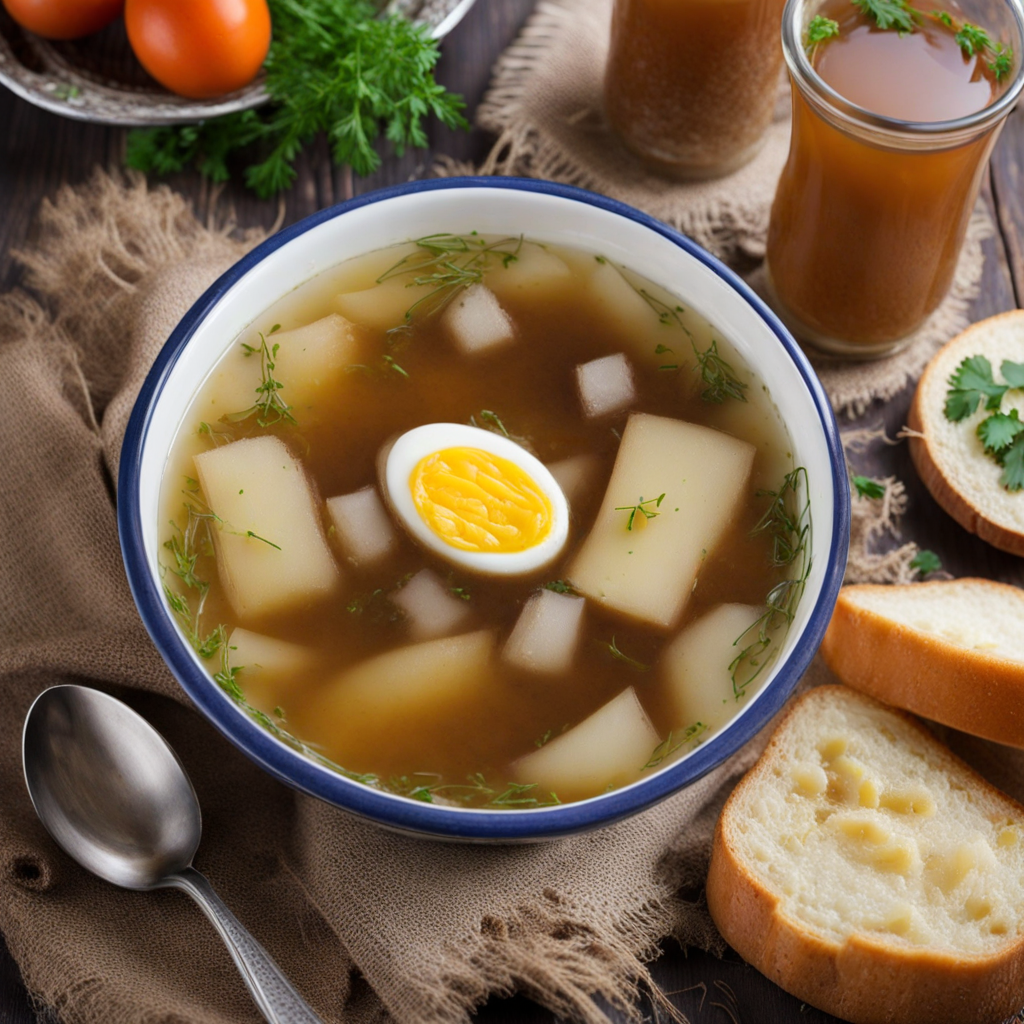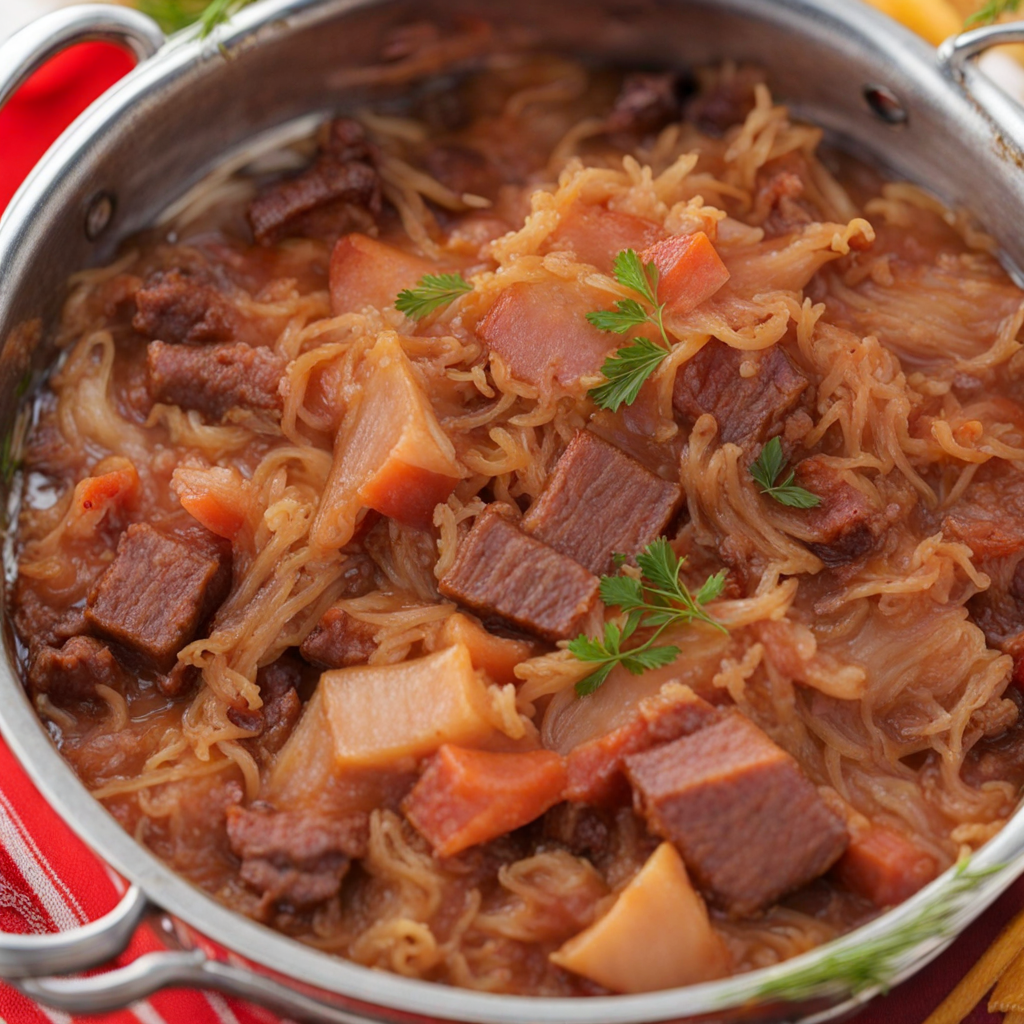Vereshchaka
Vereshchaka is a traditional Belarusian dish that embodies the heartiness and rustic charm of Eastern European cuisine. This savory delight is primarily made from finely chopped or minced meat, which can include pork, beef, or a combination of both, seasoned with a medley of spices and herbs. The mixture is often enhanced with sautéed onions and garlic, adding a depth of flavor that is both robust and comforting. The dish is typically baked or stewed, allowing the ingredients to meld beautifully together, creating a rich and satisfying experience that warms the soul. The texture of Vereshchaka is one of its most appealing attributes. When prepared correctly, the meat becomes tender and juicy, while the caramelized onions contribute a slight sweetness that balances the dish perfectly. Often served with a side of hearty bread or potatoes, Vereshchaka invites you to savor each bite, as the flavors unfold in a delightful dance on your palate. The combination of spices, which may include black pepper, bay leaves, and sometimes even a hint of paprika, elevates the dish, making it a memorable culinary experience. Beyond its delicious taste, Vereshchaka carries with it a sense of tradition and family. It is often made for special occasions or gatherings, bringing people together to enjoy not just a meal but also the stories and heritage that accompany it. Each family may have its own variation, adding a personal touch to this classic dish. Discovering Vereshchaka is like uncovering a piece of Belarusian culture, as it reflects the simplicity and richness of its ingredients, capturing the essence of comfort food in every bite.
How It Became This Dish
The History of Верашчака: A Culinary Tradition from Belarus Верашчака, a traditional dish from Belarus, is a testament to the country’s rich culinary heritage, deeply rooted in its agrarian past and shaped by the varying influences of neighboring cultures. This hearty dish, often made of meat and vegetables, encapsulates not only the flavors of Belarusian cuisine but also the social and cultural narratives of the nation. #### Origins and Ingredients The origins of Верашчака can be traced back to the rural traditions of Belarus, where agriculture played a crucial role in the daily lives of its inhabitants. The name "Верашчака" itself is derived from the Belarusian word "верашчака," which means "to cook," highlighting the dish's foundational aspect of home cooking and communal eating. Traditionally, Верашчака was prepared using locally sourced ingredients, which varied according to the seasons. The core components typically include various cuts of meat—usually pork or beef—and an assortment of vegetables, such as potatoes, carrots, onions, and sometimes cabbage. The dish is often seasoned with herbs like dill and parsley, which are staples in Belarusian cooking, reflecting the country’s agrarian environment. #### Cultural Significance In Belarusian culture, food is more than sustenance; it is a means of preserving traditions and fostering community. Верашчака has been a staple at family gatherings, celebrations, and feasts, serving as a unifying dish that brings people together. Its preparation often involves the participation of multiple family members, especially during holidays or significant life events, emphasizing the communal aspect of cooking and sharing meals. The dish also carries historical significance. Belarus has faced numerous challenges throughout its history, from invasions to economic hardships. During difficult times, dishes like Верашчака provided nourishment and comfort, making the best use of available resources. The way this dish is prepared and served reflects the resilience and adaptability of the Belarusian people. In addition to its role in family and community gatherings, Верашчака has also made its way into the broader cultural landscape of Belarus. It is often featured in local festivals, food fairs, and national celebrations, symbolizing Belarusian identity and pride. As the country navigated its post-Soviet identity, traditional dishes like Верашчака have been embraced as markers of cultural heritage, promoting a sense of belonging and continuity. #### Development Over Time The evolution of Верашчака mirrors the broader changes in Belarusian society. In the past, this dish was a simple and rustic meal, prepared in homes and farms. However, as Belarusian society modernized, so too did the preparation and presentation of traditional foods. With the advent of globalization and the influence of culinary trends from abroad, Верашчака has seen various adaptations. While the core ingredients remain largely the same, contemporary chefs have started to experiment with flavors and techniques, incorporating elements from other cuisines. For instance, some modern interpretations might include the use of spices more commonly associated with Eastern European or Mediterranean cooking, adding new dimensions to the traditional recipe. In recent years, there has been a resurgence of interest in traditional Belarusian cuisine, spurred by a renewed focus on local sourcing, organic farming, and culinary tourism. Chefs and home cooks alike are revisiting age-old recipes, including Верашчака, and finding ways to elevate them through presentation and innovative cooking methods. This revival has also been facilitated by the internet and social media, where food enthusiasts share recipes, cooking tips, and stories about their culinary heritage. The dish has gained popularity not only within Belarus but also among the Belarusian diaspora, fostering a sense of connection to homeland through food. #### Modern Variations and Global Influence As with many traditional dishes, Верашчака has inspired numerous variations across different regions of Belarus. Some families may add specific ingredients that are unique to their locality, such as mushrooms foraged from nearby forests or specific types of locally grown vegetables. These adaptations highlight the diversity within Belarusian cuisine and the importance of regional ingredients. In the context of globalization, Верашчака has found its place on the menus of restaurants that celebrate Eastern European cuisine around the world. Chefs in countries with significant Belarusian immigrant populations have embraced the dish, often reinterpreting it with a contemporary twist. This cross-cultural exchange has led to a broader appreciation for Belarusian culinary traditions, allowing Верашчака to reach a wider audience. Moreover, cultural exchange works both ways, as international culinary trends can influence traditional recipes. This dynamic interplay allows Верашчака to evolve while still honoring its roots. The modern culinary landscape encourages chefs to blend tradition with innovation, resulting in dishes that pay homage to the past while appealing to contemporary palates. #### Conclusion Верашчака stands as a symbol of Belarusian culture, embodying the values of community, resilience, and tradition. Its rich history, tied to the agrarian lifestyle of Belarus and the spirit of family gatherings, continues to resonate in the modern culinary narrative. As the dish evolves, it retains its significance as a comfort food that connects generations, whether shared at a family table or celebrated in restaurants across the globe. The journey of Верашчака reflects not only the history of Belarusian cuisine but also the broader story of the Belarusian people, their struggles, and their celebrations. Each bite of this hearty dish tells a story—a story of home, of togetherness, and of the enduring love for one’s culinary heritage. The future of Верашчака promises to be as rich and diverse as its past, ensuring that this beloved dish remains a cherished part of Belarusian identity for generations to come.
You may like
Discover local flavors from Belarus







